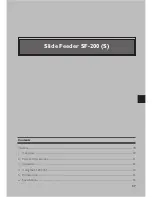
ADV0801 Owner’s Manual Draft
short data message to the controller over the control channel, requesting that a voice channel, if
available, be assigned to that user or user group for a voice call. The controller assigns an
available voice channel to the call, and sends a data message out over the control channel
signaling that user and all other members of the user’s talkgroup to switch to a voice channel
and proceed with the voice communication.
Motorola, EDACS and P25 trunked radio systems all utilize centralized control. When
monitoring a centralized control system, your scanner utilizes the data sent by the controller on
the control channel to track the voice traffic for the talkgroups that you wish to monitor.
Systems with distributed control do not utilize a central controller to manage the assignment of
radio channel resources. Each channel includes its own individual controller, and these
controllers are all connected to each other over a data bus, such that every channel and
controller on the system knows the status of the other channels and controllers at any given
moment. In distributed control, there is no single dedicated control channel. Each individual
channel serves as a control channel for the users and user groups that are “homed” to that
channel by sending out a subaudible data message simultaneously with voice traffic when
needed.
The portable and mobile radios in a distributed control trunked radio system monitor their
home channel when idle for data messages that include commands regarding activity for their
talkgroup, and, in the event that the home channel is busy, a free channel elsewhere on the
system that is available for communications if needed.
When a user in a distributed control system needs to speak, they press the push-to-talk button
on their radio. If the home channel is not in use, the controller sends a data message out over
the home channel that tells the other users in the talkgroup that a call is taking place on the
home channel, and all the radios in the talkgroup transition to voice call mode on the home
channel.
If the home channel is busy, it sends subaudible data messages over the home channel
simultaneously with any voice traffic it is carrying. These subaudible data messages include a
“free repeater” message that informs other radios homed to the channel of the next available
free repeater that is not in use. When a user places a call by pressing the push-to-talk button in
this scenario, the new call is placed on this free repeater, and the subaudible data message on
the home is updated to include signaling that tells other users of the talkgroup that the
talkgroup is now active on the free repeater. The other users switch to the free repeater and the
voice call proceeds there.
LTR systems operate using distributed control. Your scanner utilizes the data sent by each
controller on each channel to track the activity on an LTR system.
Appendix D - About CTCSS, DCS and P25 NAC
CTCSS, DCS and P25 NAC are terms used to describe the different types of selective squelch
that your ADV0801 is capable of utilizing with conventional, non-trunked radio channels.
In many cases, frequencies that are assigned to licensees are not licensed on an exclusive basis.
Page
81
































